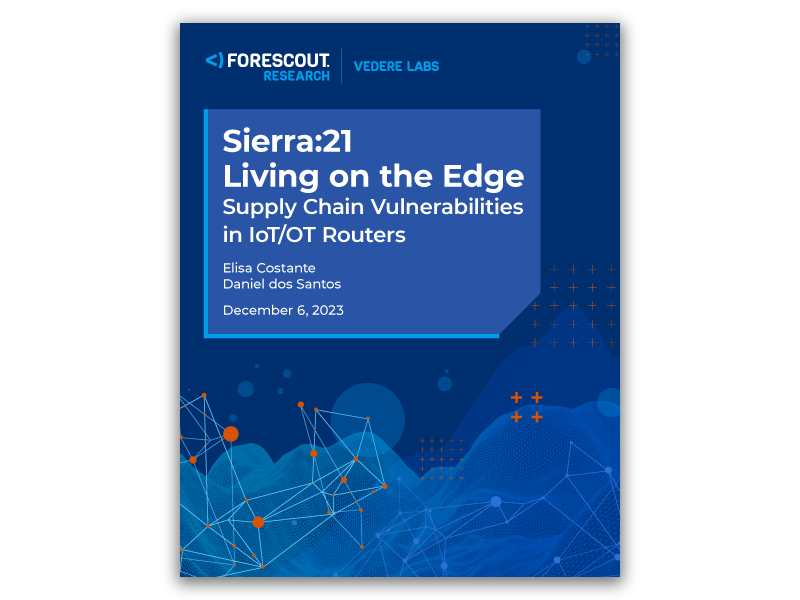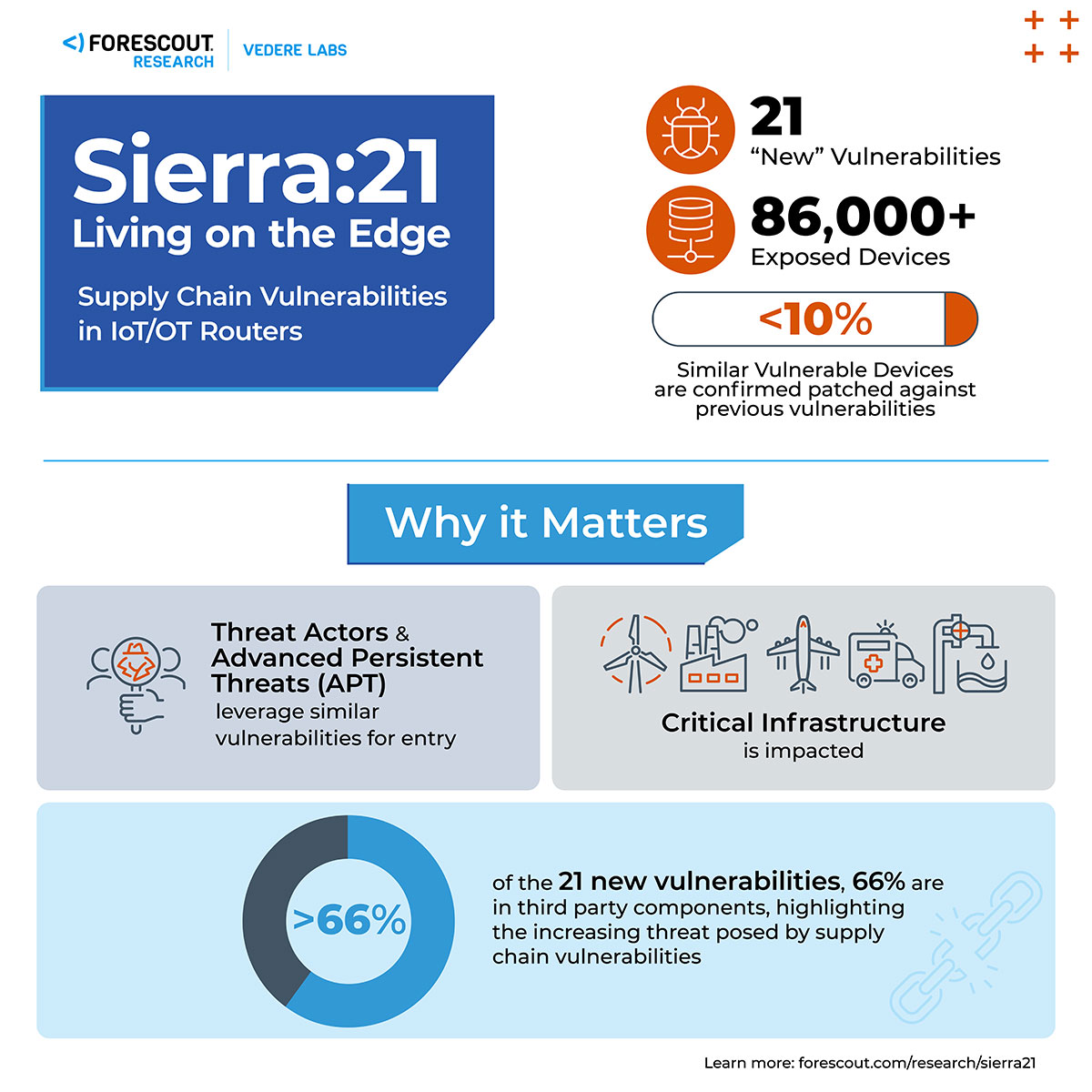How Forescout Can Help
To enable risk assessment and segmentation decisions, we added passive vulnerability matching to the CVE database for Forescout eyeInspect and Forescout Risk and Exposure solutions.
Forescout eyeInspect can also detect exploitation attempts against Sierra Wireless devices using the new ACEmanager Monitor script. eyeInspect detections can be forwarded to Forescout Threat Detection & Response (TDR), where they can be automatically correlated with telemetry and logs from a wide range of sources, including security tools, applications, infrastructure, cloud and other enrichment sources. It can then generate high-fidelity threats for analyst investigation.
Finally, Forescout TDR detections can be sent to Forescout eyeControl for automated remediation or restriction actions based on user-defined policies.


